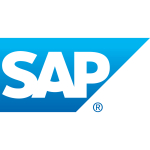What is our primary use case?
I work with an insurance company and our main reason for using Denodo is to bring together all our data into one platform in the cloud. The company has very diverse data sources including data stored in the cloud, XML files, Db2 and SQL databases, and SAM / VSAM files on legacy mainframe platforms. Thus, management decided that they wanted all the data in one place by connecting these different data sources for better visualization and reporting.
It's really working well for us and we are using it for both of our claims centers with our claims management solution as well as our premium management solution. One instance of Denodo is for the underwriting team and the other is for the actuary team. In total, we have around 45 people using it.
We were originally using the solution on-premises but we are now using the cloud version deployed on Azure.
How has it helped my organization?
There are a lot of benefits of using Denodo in our company. Suppose, as an underwriter, you are approving a policy for a customer; typically, you will have to do a number of SQL queries or perform macros on Excel to find out information such as, "How many years has this customer been with the company and how is their claim history?" or "How is this customer's business actually doing?" There are many things that underwriters want to check before they approve any underwriting amount. And this means, for any approval, they're taking up to three or four hours, especially in a commercial insurance setting with all the changes that have taken place during Covid.
Lots of companies have filed for bankruptcy or are not doing as well as they should be, so there are many changes that the underwriting teams have to take into account. These teams could be doing great business by writing the right amount for premiums for the company or for the client, and they have been having a lot of difficulties reaching certain data points in order to give their final verdict.
However, now that everything is in front of them in one virtualized screen, they can quickly see all the necessary data such as claims files, history files with previous premium history, how much lifetime value the client has for the company, etc. They can obtain all these pieces of information from a single search and then make an appropriate decision to approve or deny, all within 15 to 20 minutes. Considering that the time to do such things has come down to 20 minutes from three hours, you can tell how much time has been saved by using Denodo.
Also, some of the underwriters are over 60 years old, having been in the company for 35 years or more, and they don't love technology that much. Yet, with the training that we've given them, they're slowly starting to enjoy it and are now able to appreciate how much time it has saved them. They are very aware that Denodo is helping them, even though they would have been happy to stick with Excel.
What is most valuable?
We initially thought that we'd be using more features of Denodo than we are currently. And, in fact, there is a large number of features, ranging from data visualization to data virtualization and connecting to different non-connectable parameters (such as connecting to many different types of files, which other products don't allow you to do as easily as Denodo does). However, after we moved to the cloud with Azure, we mainly used only the data virtualization features of Denodo, while opting for Power BI when it comes to visualization with dashboards and reporting.
So while we may not be using all the features of Denodo at this time, we have found the data virtualization features to be very useful in helping us connect our data sources together, bringing all our data into one platform.
What needs improvement?
As a company, we first did a proof-of-concept for about four months to make sure the product was a perfect fit for us or not, and beyond that I have only used Denodo for another year or so, so I know that we haven't used the product to its fullest yet. Indeed, a lot of Denodo has changed since we had our first presentation on it with the Denodo sales team who gave us a rundown of all the features. Nevertheless, there are multiple ideas I could suggest in terms of improvement.
First of all, the visualization and reporting could be better. Of course, the data virtualization is good, but the data visualization could be improved with regards to the real-time dashboarding of the graphs, pie charts, etc. For the real-time data, the dashboard should preferably be updated automatically every hour. Let's say, as a CEO or CFO, I just want to know how much premium the company will get at any hour of the day. This data should be readily available on the dashboard. This is largely why we stick with Power BI's dashboarding features (besides the simple fact that Power BI works well hand-in-hand with Azure), and why we still haven't used Denodo's data visualization features as much as the data virtualization features.
Another area we have been struggling with is the integration of Denodo with both Salesforce and MuleSoft, which we use to track the customers in our sales system, such as when sending insurance quotes. When we first tried to integrate Salesforce, we found that there was some type of version incompatibility. We had a hard time talking with Salesforce about this, but eventually we upgraded our version and the integration was resolved. Yet, this was a challenge that I feel we didn't need to go through, as we were not able to quickly map out the issue. And with MuleSoft, we have not been able to integrate it properly at all.
I have also seen our users complain about the availability of data sources, where they are sometimes not able to connect to all the sources they need. This kind of complaint, however, is difficult to diagnose, and I don't know for sure whether it is due to how we have Denodo set up in the company, or whether it's an actual issue with Denodo itself. These complaints were mainly made during the first few months of our usage, so it is possible that the problems stemmed from a lack of knowledge on how to use Denodo correctly, especially since the individual feedback would generally be something vague like, "Okay, I'm not able to do this". To help resolve these complaints, I would suggest that Denodo work on better documentation and perhaps some kind of virtual training.
For example, there's an insurance software company called Guidewire, and when we first brought Guidewire into the company they sent us a lot of training videos even before the actual integration took place. For Denodo, it would be beneficial to make sure that the team that will be using it has some kind of training on how to use the product at least a month beforehand, and there could even be some kind of feedback or Q&A sessions to go along with the training. If Denodo were able to provide this kind of training, it would be very helpful to users in insurance and banking companies because the staff are typically older and not always technically-minded. They say, "You are pushing us too hard", so they need encouragement when it comes to adoption of a new software product.
For how long have I used the solution?
I have been working with Denodo for about two years now.
What do I think about the stability of the solution?
We don't have many complaints about the stability of Denodo. So far it's behaving well.
What do I think about the scalability of the solution?
Denodo is very scalable. That's the best part of it; you can add extra features and also integrate the product with other software.
In terms of users, we have about 45 people working on Denodo, mostly simultaneously.
How are customer service and support?
The support, so far, is good. When opening tickets, there isn't a problem with response times, and there are no complaints from users internal to the company in this regard.
Which solution did I use previously and why did I switch?
With one of our main goals being to collect data through SQL, we have also done reporting with BO (Business Objects) and Cognos, which gets delivered to the operations team. However, before Denodo, I hadn't any experience with data virtualization, which is what we primarily use it for.
One thing that I am happy about is that Denodo now has an API available. The development team can easily build on the API and expose it so that other teams can start using it. With this, we can take all data from different sources and put it in the cloud, and then from the cloud we can build our own product and perhaps even put our own dashboarding on top of that.
It was actually one of the senior IT directors (who recently joined us from Infosys and has a lot of experience with financial clients) who recommended Denodo for our company. He really pushed us on it, emphasizing its cost-effectiveness, so my VP and team all agreed to go for the proof-of-concept. After doing the POC, we really liked the product and simply went for it.
How was the initial setup?
The deployment was good, but finding the right environment to deploy to isn't too easy. For every new product, we do an infrastructure assessment and we did the same for Denodo. Initially, it took some time to make it happen with all the approvals needed, but in terms of complexity, it wasn't too bad. I would rate the complexity of the deployment a 6/10.
Our proof-of-concept took place over the course of about four months, and the POC version was very easy to handle since we got a lot of support from Denodo during that time. Their team was always talking to us and came in with two or three guys at a time. When someone is there helping you, backing you up, you feel comfortable. Of course, it took a bit of time to get all our staff on board, but it was easy enough.
When we went with the full and final rehearsal, it actually took more time to work than expected to make everything ready. This took about two to three weeks for us, because we first needed the results from the security team, infrastructure team, payment team, and so on. There were many people involved in the deployment, both internally and externally, so it did take a while to get settled.
What about the implementation team?
We had both in-house teams and personnel from outside the company perform the complete implementation.
What's my experience with pricing, setup cost, and licensing?
The licensing is taken care of by the procurement team, but I think the pricing was good. I believe our company got a good discount on the market price for the first two or three years. After that, we are going to be paying in full.
Talking with my manager and others, nobody has complained about the pricing so far which is a positive sign.
What other advice do I have?
Denodo is a good product with superior stability and scalability, and it can be very helpful to the various teams of a company in different ways. However, even though products like Denodo are a good choice for many buyers, you shouldn't forget to undergo the proper training and analysis on how to make the product most useful in your specific circumstances. You need to know your processes well, including your weaknesses and the particular challenges that your company needs to overcome. If you can cover these areas, you will find Denodo to be an excellent solution.
I would rate Denodo a seven out of ten.
Which deployment model are you using for this solution?
Public Cloud
If public cloud, private cloud, or hybrid cloud, which cloud provider do you use?
Microsoft Azure
Disclosure: My company does not have a business relationship with this vendor other than being a customer.


















